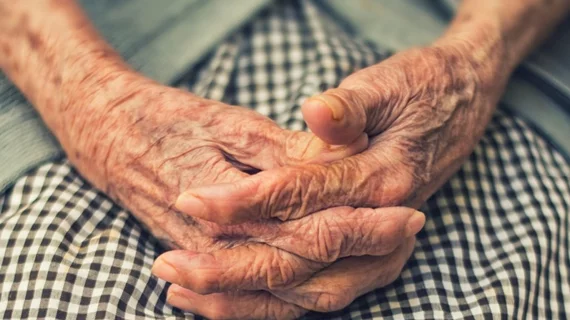Radiopharmaceutical safely monitors rheumatoid arthritis
Intravenous (IV) administration of technetium-99m (99mTc) was shown to be a safe, noninvasive way to observe rheumatoid arthritis disease activity, according to a study presented at the 2019 Annual Meeting of the Society of Nuclear Medicine and Molecular Imaging (SNMMI) in Anaheim, Calif.
Rheumatoid arthritis (RA) affects more than 1.3 million people in the U.S. In those with the autoimmune disease, macrophages release pro-inflammatory cytokines and chemokines that compound the disease. 99mTc tilmanocept (TCT) attaches to the macrophage mannose receptor CD206, which is highly expressed on activated macrophages, and thus a target for radiopharmaceuticals to identify and track RA.
“Intravenous (IV) administration of TCT provides a novel noninvasive molecular imaging marker that demonstrates joint-specific, CD206-expressing synovial macrophage involvement,” said Arash Kardan, associate professor of radiology at Case Western University in Cleveland, in a prepared statement. “It reveals potentially significant qualitative and quantitative immunodiagnostic information regarding the distribution and severity of active disease involvement in RA patients.”
For the first in-human Phase 1/ Phase II study, Kardan and colleagues divided 39 patients (33 with RA and 6 controls) into 11 groups to receive combinations of intravenous 99mTc at 1, 5 and 10 mCi, and 10 mCi with 50 µg, 200 µg, or 400 µg of TCT. All patients underwent whole-body planar imaging with a gamma camera along with spot views of the hands and wrists at one hour and three hours following injection. Twelve patients also underwent whole-body planar imaging to asses radiodosimetry and pharmacokinetics.
The team found that TCT localized in the inflamed joints of RA patients, but not the healthy participants. Further analysis found 134 µg tilmanocept/10 mCi of 99m TC as an optimal dose, stable over an imaging time frame of one to three hours after injection. Kardan et al. recommended a mass dose of 150 µg for future research.
There were no drug reactions or adverse events among the 39 patients.
“These results enable the initiation of further clinical studies to assess if intravenous 99mTc tilmanocept imaging can provide physicians with a noninvasive, receptor-specific molecular imaging marker of rheumatoid arthritis disease activity status to guide the most effective therapeutic strategy for their patients,” Kardan explained. “This includes when to initiate therapy and evaluation of response to therapy, thereby improving outcomes for all patients with rheumatoid arthritis.”

